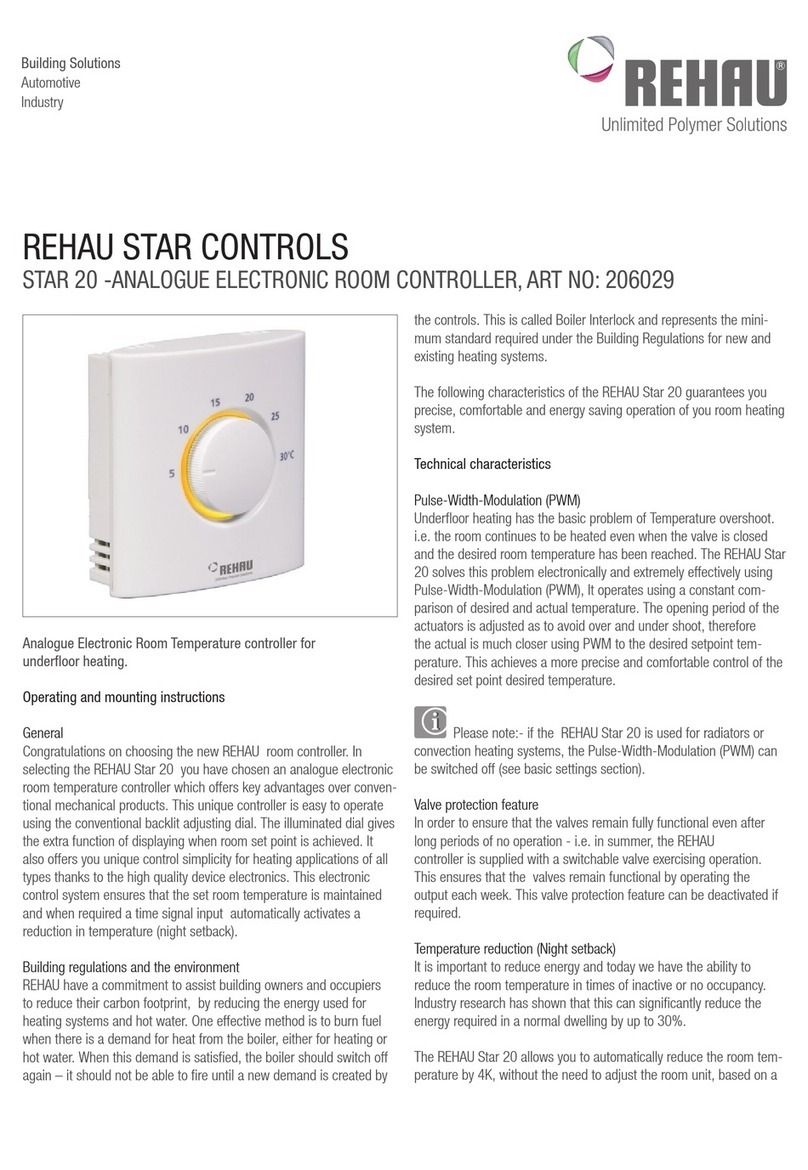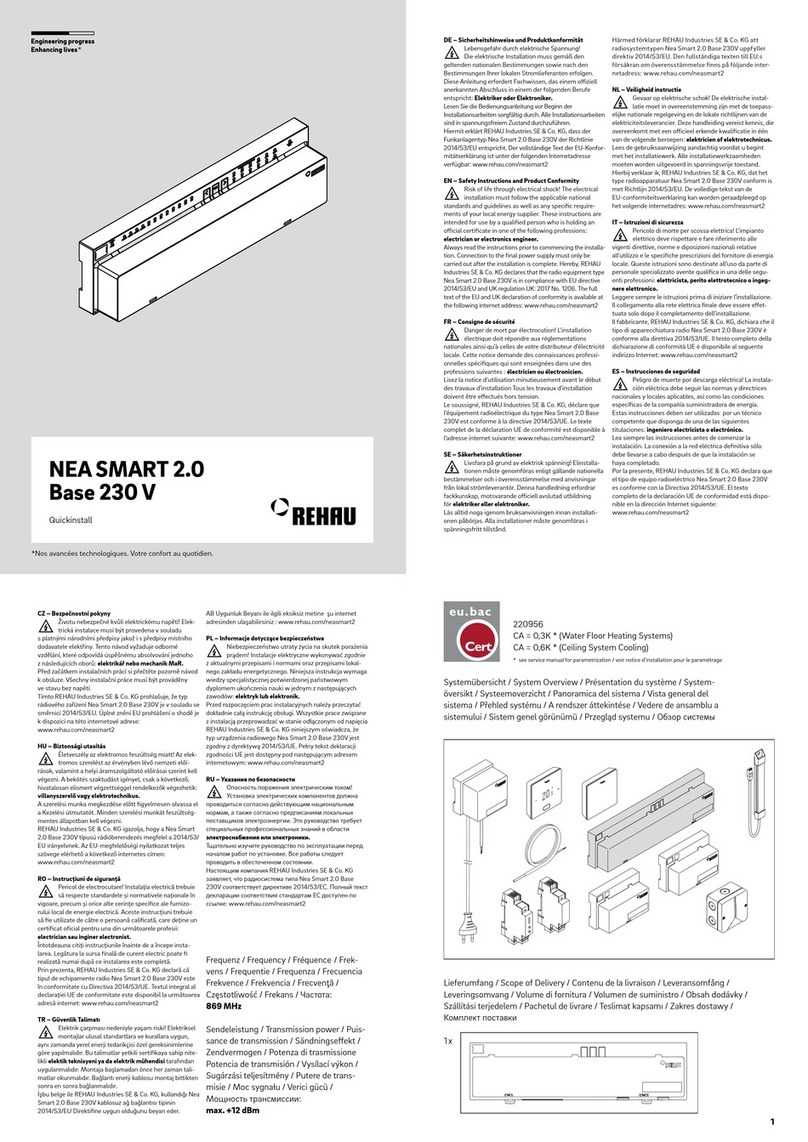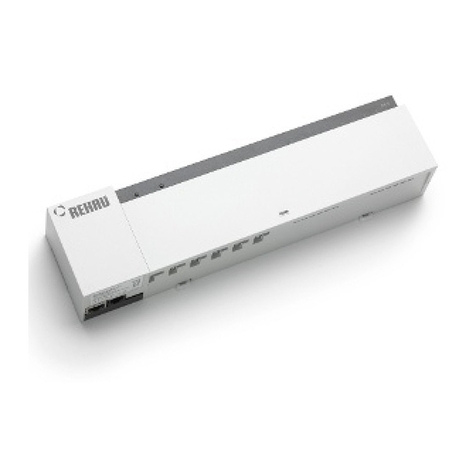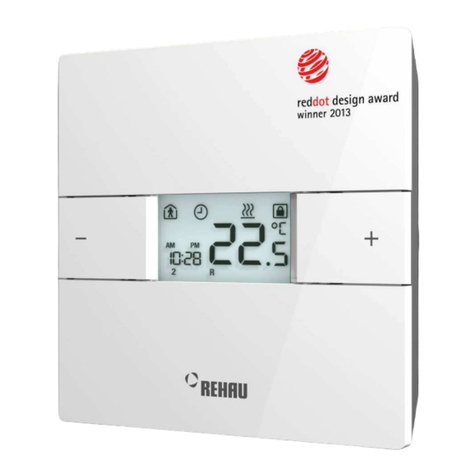5
PRINCIPLES OF UNDERFLOOR HEATING/COOLING
PRINCIPLE OF UFH
Thermal Comfort
REHAU underfloor heating system operates on
the basis of low surface temperatures and even
temperature distribution across the whole floor
with comfortable radiant energy. In contrast to
other heating systems the radiative equilibrium
between occupants and the surfaces in a room
is established and an optimum level of comfort
is achieved.
Energy-saving
Due to the REHAU underfloor heating systems’ high
proportion of radiant energy, comfort conditions can
be achieved with lower room temperatures typically
1ºC to 2ºC. This facilitates a typical annual energy
savings of 6% to 12%.
Environmentally friendly
Due to the high heat output, even at low flow
temperatures, the REHAU sub-surface heating
systems are ideal for use in combination with gas
condensing boilers, ground source heat pumps or
thermal solar power systems.
Good for allergy sufferers
Through the REHAU underfloor heating systems’
low proportion of convective energy only a minimal
thermal vortex is formed. Dust circulation and the
carbonising of dust are thus a thing of the past.
This protects the airways - not just those of allergy
sufferers.
Visually attractive rooms without radiators
The REHAU underfloor heating / cooling systems
- Allow the user to be free with their
interior design
- Gives the architect the planning freedom
- Totally eliminates risk of injury and burning from
surface mounted heat emitters. Hence totally
suitable for nurseries, schools, hospitals, clinics etc.
- Lower maintenance costs.
Operative Temperature according to CIBSE*
Winter Summer
In living spaces and lounges 22-23ºC 23-25ºC
In bathrooms 20-22ºC 23-25ºC
* CIBSE Guide A, Environmental Design
Room air temperatures according to
BS EN 12831
- In living spaces and lounges: 20ºC
- In bathrooms: 24ºC.
Surface temperatures
Maximum permissible floor surface temperatures
are to be observed for the surface as a surface
in direct contact with people for medical and
physiological reasons:
- Occupied zone 29ºC
- Peripheral zone 35ºC (generally situated along in
the floor near large glazed areas).
1.0
1.1



































